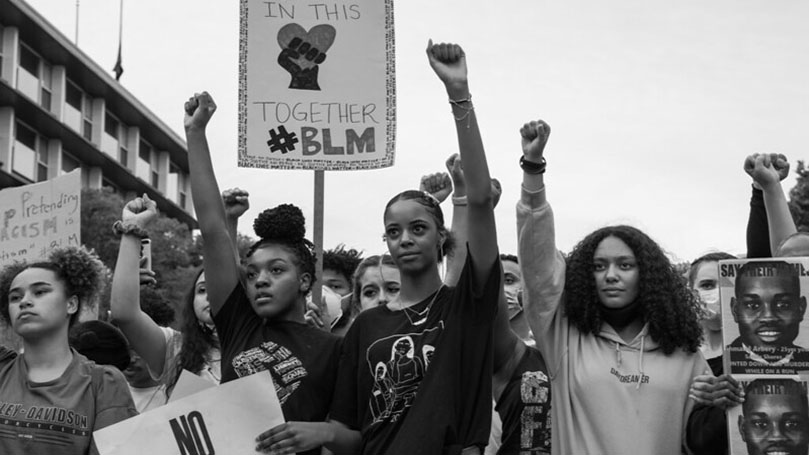
Why did Hillary Clinton lose in 2008? Her campaign couldn’t figure out how to defeat a mass movement. Why did she lose in 2016? Once again, her campaign couldn’t figure out how to defeat a mass movement.
While the first loss to Obama was no tragedy, to borrow Marx’s phrase, the second to Trump was most certainly a farce. What the winning campaigns held in common, however, was that both were contests between countervailing mass movements, a new phenomenon in 21st-century bourgeois politics.
This electoral mass-movement trend continued in 2020 as tens of thousands swirled around the pre-COVID rallies of Warren, Sanders, and Trump.
The murder of George Floyd sparked another mass movement and people’s uprising the scale and breadth of which the country has never seen. It continues today unabated, sparked by the shooting of Jacob Blake.
What gave rise to the latter was precisely what the former insurgent Democratic campaigns may have felt but ultimately failed to grasp—the fierce urgency of the freedom movement’s long unanswered cry for justice, the addressing of which could have made those electoral movements unbeatable.
And then came the irony of ironies: the two candidates who failed to generate “movement,” Biden and Harris, are tasked with confronting the rebel yells of the mass movement led by Trump.
Will they prevail, or will once again, as the poet prophesied, the center fail to hold?
After all, what does it take to defeat a mass movement? Well, it depends. Warren’s momentum was stalled by a skillful combination of maligning her policy positions (particularly Medicare for All) and misogyny. Sanders, on the other hand, was undone by corporate red baiting among enemies and “allies” alike along with a certain narrowness of his stubbornly sectarian “class”-oriented pitch. But what about Trump?
The Make America Great movement is another matter entirely. Unlike its center-left counterparts, Trump’s white supremacist base in the “new GOP” is richly endowed and long in the making, dating back at least to Nixon’s Southern Strategy, the Chamber of Commerce–financed takeover of the GOP by the Moral Majority, and neo-conservative activism. What began as a whiff of fascism in the 1980s now has strong headwinds. Unraveling Trump’s alt-right network stretching from corporate boards to the lower middle class will be no small task.
Clearly, it will take a mass movement to defeat a mass movement. A material force like Trump’s can be overcome only by a comparable if not superior material force. That material force exists in the democratic people’s uprising, the anti-Trump resistance, and more. To succeed, the Democratic campaigns must meet the movements and address the most critical issues of the political moment, not the least of which is an end to racist police violence.
Here an opportunity was missed at the Democratic convention. Unemployment benefits for many have run out along with the $600 supplement. Folks can no longer pay rent. The country’s in a depression. One would have thought that Biden and Harris would have placed the $600 and evictions front and center.
Trump, on the other hand, hammered home on job-letting trade deals like NAFTA and the TPP during his first run for the White House and again last week at the GOP convention. Yesterday, his Centers for Disease Control and Prevention issued an eviction moratorium until the end of the year. Clever.
Fortunately, Trump’s demagogy is not lost on the broad working-class public—at least so far. With the contest tightening, what’s important is not the polls—which you can trust as far as you can throw them—but what’s occurring on the ground: the voter registration drives, GOTV efforts, and initiatives to defend the vote. Equally important is the imperative to continually organize on the issues by demanding, again and again, the $600, jobs or income, COVID testing, and an end to racist violence.
The all-people’s front cannot fail to have the working class’s demands at its center. Trump, who from the right leads such a front (yes, there is a right-wing version of the popular front), understands that.
Pressing forward on these issues over the next 60 days will help energize the part of the electorate that has to make a difference on Election Day: workers, women, young people, black, brown, Asian, and white.
It’s gonna take a movement to win.
Image: Matthew Roth, Creative Commons (BY-NC 2.0).


 Join Now
Join Now